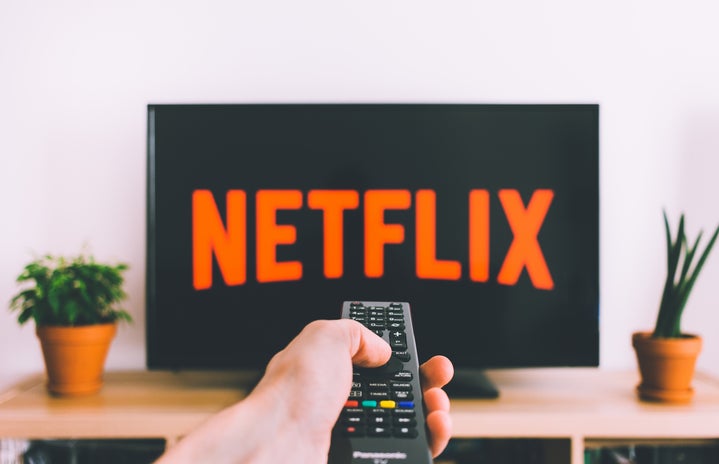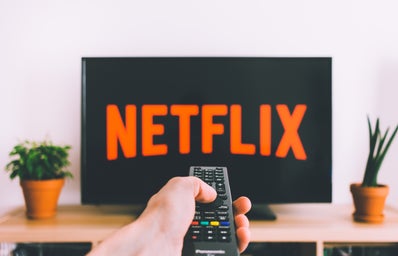Avatar: The Last Airbender is easily one of the most beloved and influential shows to ever air on Nickelodeon, and for good reason. Its unique world-building, diverse cast and incredible character arcs are only a few of the things that make Avatar such a memorable show. There’s no shortage of emotionally charged moments and thrilling action sequences, and it’s no wonder that Avatar made such a comeback when it dropped on U.S. Netflix back in May. But its sequel series — The Legend of Korra — is often overlooked at best, if not ridiculed.
It’s no secret that I prefer the original series over Korra’s story, but what a lot of people seem to forget is that while The Legend of Korra could never truly match up to the perfection of The Last Airbender, it’s still a great show in its own right. People are quick to mock The Legend of Korra for all the ways that it didn’t hold up against the original, but I think it’s important to look at all of the things that Korra’s story did right in comparison to The Last Airbender.
- Complex Villains
-
One of the main differences between The Last Airbender and The Legend of Korra is how the stories are structured. Aang’s entire story across all three seasons leads up to him defeating the Fire Lord, while the villains that Korra face change every season. This ends up being one of the show’s greatest strengths, though. While The Last Airbender gave us the unforgettable and honestly, flawless, redemption arc of Price Zuko, the actual villains of the show were relatively one-dimensional. The fact that Fire Lord Ozai’s 14-year-old daughter, Azula, was scarier than him says a lot about him as a villain. The Legend of Korra, however, gifted us with incredible and fully-fleshed out villains every season (except for season two — nobody likes Vaatu and Unalaq). We got to understand the reasoning behind what the villains were doing and could see why all of them seemed to think that they were doing the right thing. Amon stood for equality, The Red Lotus sought to free the common people by ending corruption in government, and Kuvira wanted to restore the Earth Kingdom to its former glory. Even though their tactics were extreme, the best thing that The Legend of Korra did was allow us to empathize with the villains.
- Powerful Adult Characters
-
Avatar: The Last Airbender was first and foremost a kids’ show. While the storylines may have been way more mature than other shows on Nickelodeon, the main cast was still primarily composed of teenagers, with the exception of Uncle Iroh. Every time that adult-size characters came in, like Katara and Sokka’s dad, they were whisked away within a few episodes to leave more room for the kids. The Legend of Korra took an entirely different approach to the adults in their show. Tenzin and Lin Beifong were just as important to the story as Korra and the rest of Team Avatar, if not more so at times. Even Aang’s other children, Kya and Bumi, became major players in seasons three and four, along with Suyin Beifong. It was clear right from the start that The Legend of Korra could still be watched by kids but was meant more for the teenagers and adults who grew up and matured with the original series. Watching adult characters that the viewers care about struggle through the challenges posed by the season’s villain, just as much as Korra, helped to raise the stakes and show just how threatening the villains actually were.
- Worldbuilding
-
Part of what made Avatar: The Last Airbender such an incredible show was its world-building. The lore behind bending and the history of the Avatar was part of what made it so interesting and what kept viewers watching. The Legend of Korra took this lore and expanded on it. Though season two is universally disliked by the fanbase, it did give us more answers into the Avatar Cycle and the history of bending that was never touched upon in The Last Airbender. We also delved further into the Spirit World and its relationship with the physical world, which became a major plot point in seasons three and four. The Legend of Korra took what the original series gave us and only improved upon it, helping to solidify Korra’s story as her own and not just a continuation of Aang’s.
- Representation
-
Representation is one of the biggest parts of what made Avatar: The Last Airbender so unique. The characters came from different ethnic, ideological and financial backgrounds, but even more importantly, there were multiple characters who had disabilities that only made them stronger. Toph Beifong’s blindness never stood in her way; instead, she made jokes about it and kicked more a*s than any other earthbender in history. Zuko was a victim of abuse who ultimately stood up to his abuser and reclaimed his honor all on his own. There was no shortage of representation in The Last Airbender, but The Legend of Korra will always be remembered for its groundbreaking series finale. Throughout The Legend of Korra, I was a die-hard Makorra shipper, but watching Korra and Asami walk hand-in-hand into the spirit portal while gazing into each other’s eyes was a monumental moment for LGBTQ+ viewers who had never been represented on screen. The Legend of Korra comics further delved into LGBTQ+ representation, with Kya and even Avatar Kyoshi talking about their past relationships with women. The Legend of Korra also gave us a very realistic depiction of PTSD following Korra’s encounter with Zaheer and the Red Lotus. The Legend of Korra took the foundation of strong representation that The Last Airbender laid and only built more upon it.
- Character Development
-
Character development isn’t exactly something that The Last Airbender struggled with. I still cry over Zuko’s character arc every time I watch the show. But the arcs of the other members of Team Avatar are far less apparent than Zuko’s, if they’re even present at all. The Legend of Korra gave incredible development to more characters than just one. The person that Korra is at the end of the series is unrecognizable from who she was at the beginning of her journey. She goes from a cocky, impulsive, over-powered hero to a wise, calculated, and ultimately more powerful version of herself. Tenzin starts the series as a man who is desperate to uphold his father’s legacy and be a spiritual leader, but he ultimately realizes that it’s not solely up to him to bring back the airbenders, and his daughter Jinora becomes the spiritual guru of Team Avatar. Asami, Mako and Bolin all go through their own arcs throughout the years that pass in The Legend of Korra, and even the side characters and some of the villains show growth through the series.
- Uncle Iroh
-
Avatar: The Last Airbender knew what it did best, and its best was Uncle Iroh. His cameos in The Legend of Korra melted my cold, dead heart.
Though Avatar: The Last Airbender will always reign supreme in my heart, The Legend of Korra took creative risks and improved upon the source material in ways that the audience did not expect. Maybe it doesn’t hold up as a sequel to the original series as well as some fans might have hoped, but The Legend of Korra is just as worthy of praise.



